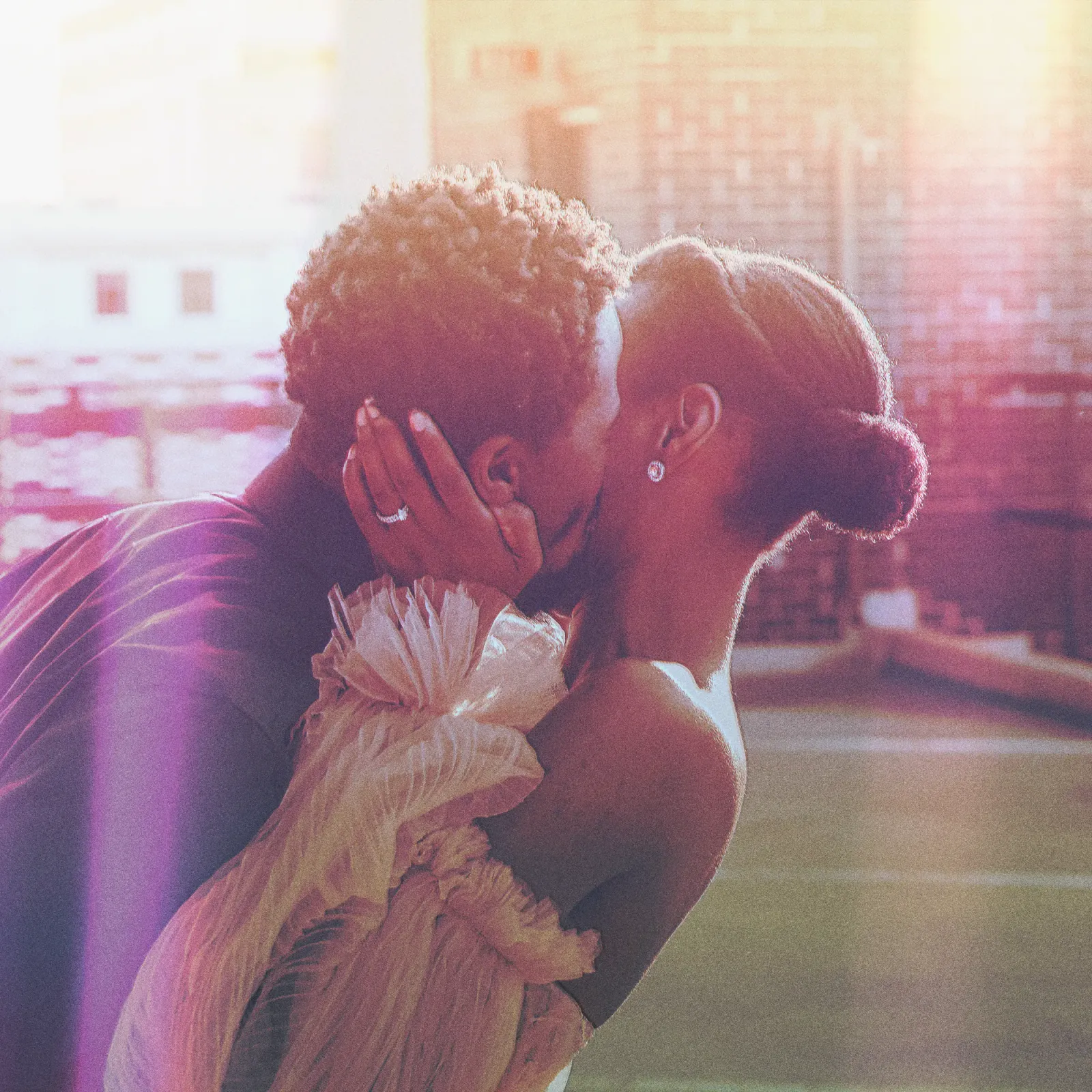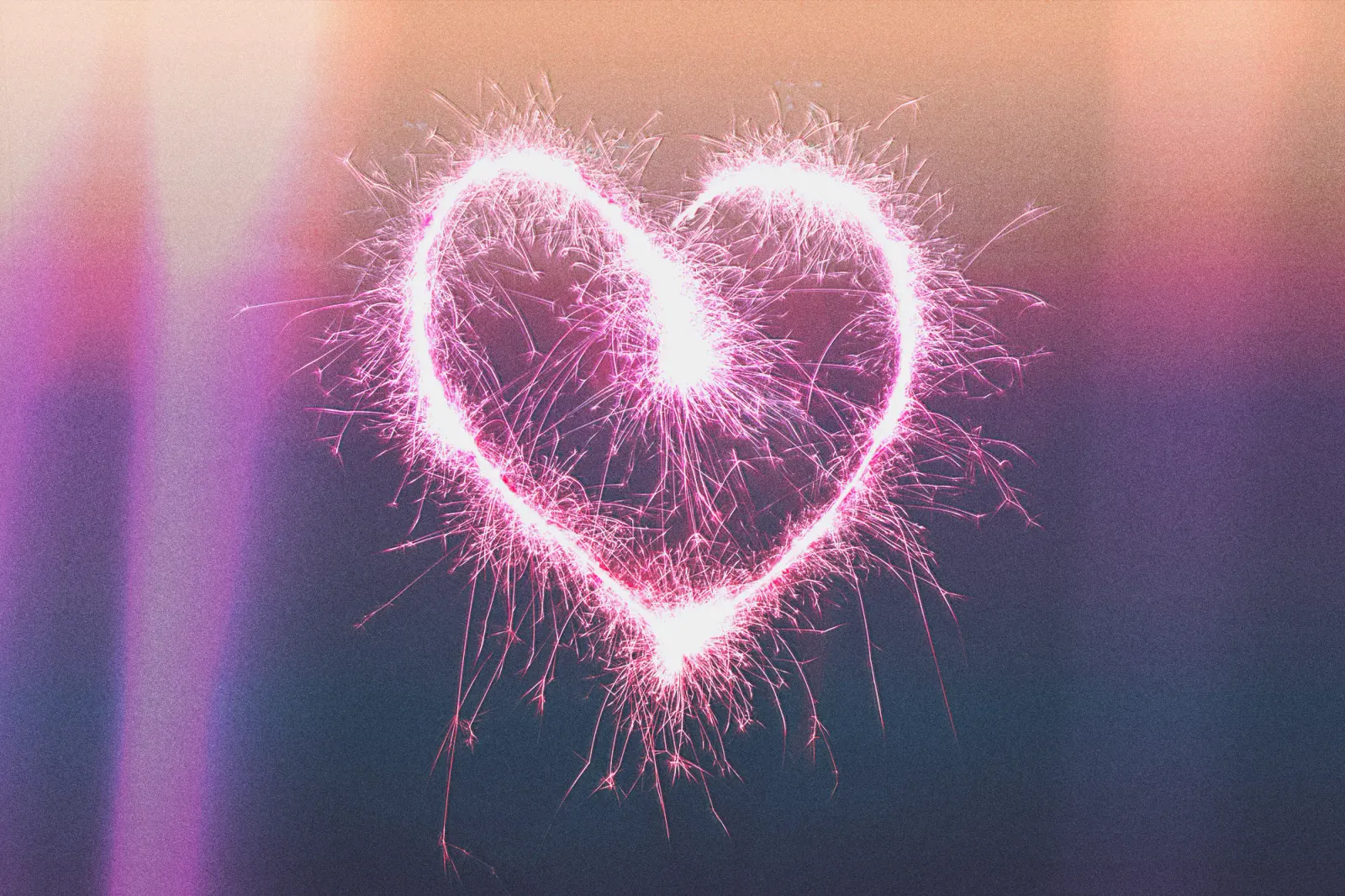There are numerous diamond shapes to choose from. Ultimately it's down to which shape tugs at your heart, but each shape has a unique set of attributes it pays to understand. Below we talk you through the ten most popular shapes available. But first, a little word on shape...
Shape is not the same as cut. The shape of a diamond refers to its silhouette, its outline. The cut of a diamond is a measure of quality; of how well the diamond has been carved to maximize beauty through precise geometry. There's plenty of info on how cut affects beauty, brilliance and fire here.
The difference between the two terms isn't totally clear cut though (pun intended. Sorry.). You will often see the word 'cut' used to refer to the shape of a diamond because each diamond shape has a full name which includes the word cut. For example Round Brilliant Cut or Princess Cut. Helpful, huh? There are also examples where shape and cut are intertwined; the Emerald Cut is not only defined by its rectangular shape but by the cut of its long, stepped facets.
Now that we've cleared that up for you, here are the main diamond shapes on the market:
Round
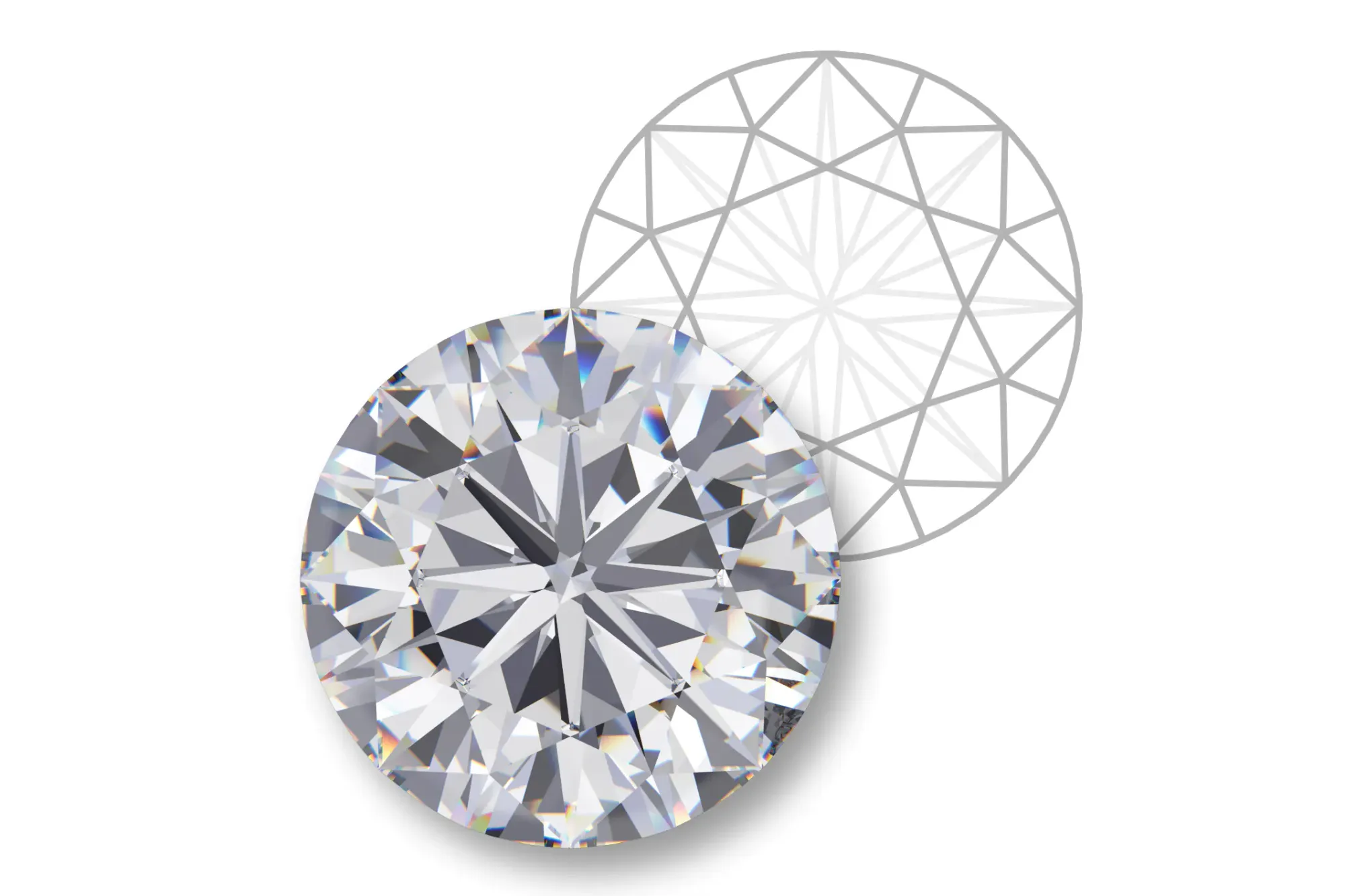
The most popular of all the diamond shapes, the round brilliant is known for its breathtaking sparkle. The cut is designed to maximize light play for brilliance, sparkle and fire. The round shape is utterly timeless, and suits all fingers. It's also versatile, with a huge number of setting styles to choose from.
For our in-depth guide to buying round diamonds click here.
Princess
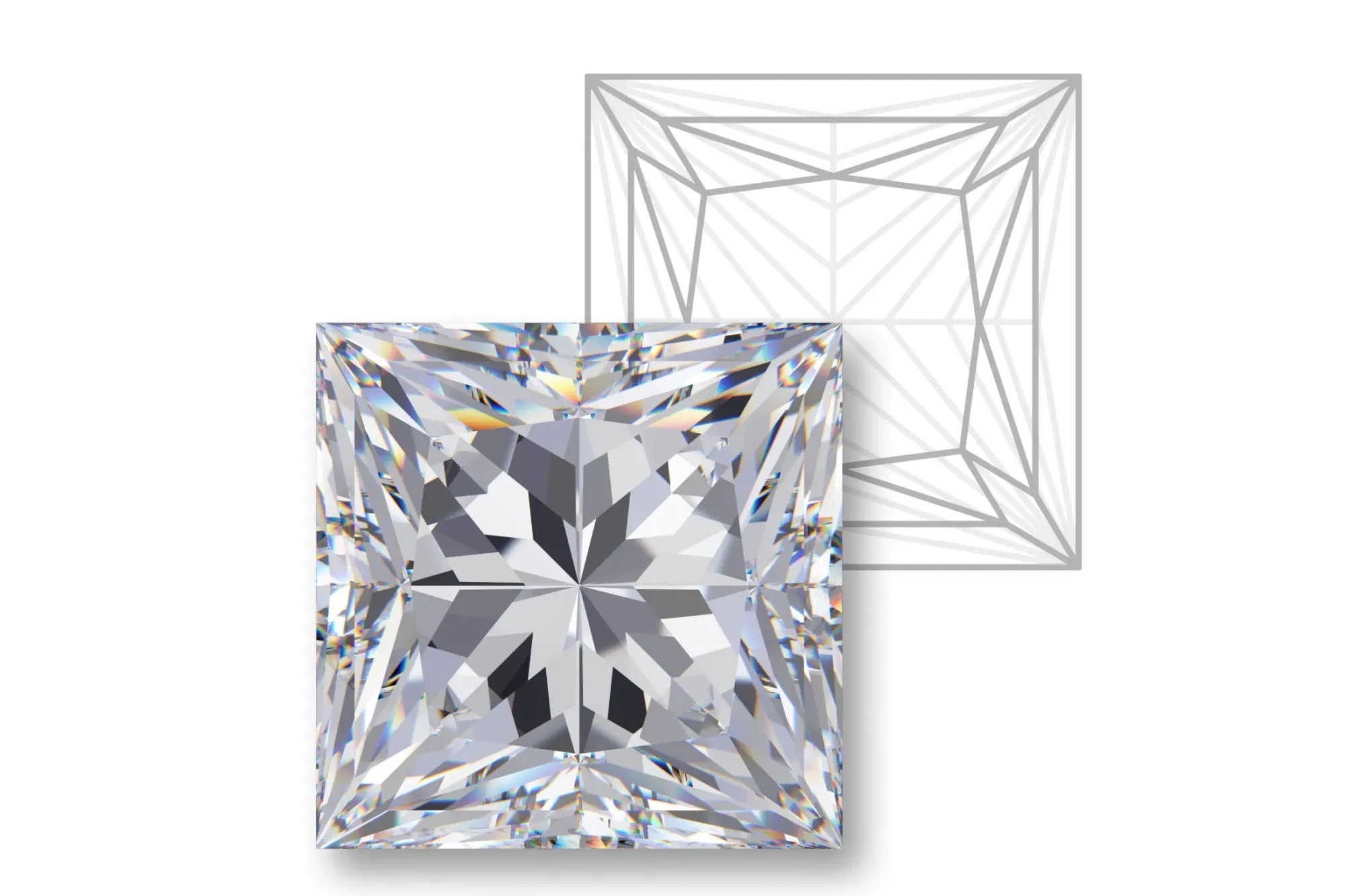
The princess cut, like the round brilliant is known for its show of sparkle and fire. With a square shape and pointed corners, the princess cut was originally developed to deliver the same sparkle as a round brilliant, whilst enabling diamond cutters to retain more of the original rough stone. This means that the princess cut usually carries a lower price per carat than a round brilliant diamond.
For our comprehensive guide to princess cut diamonds click here.
Oval
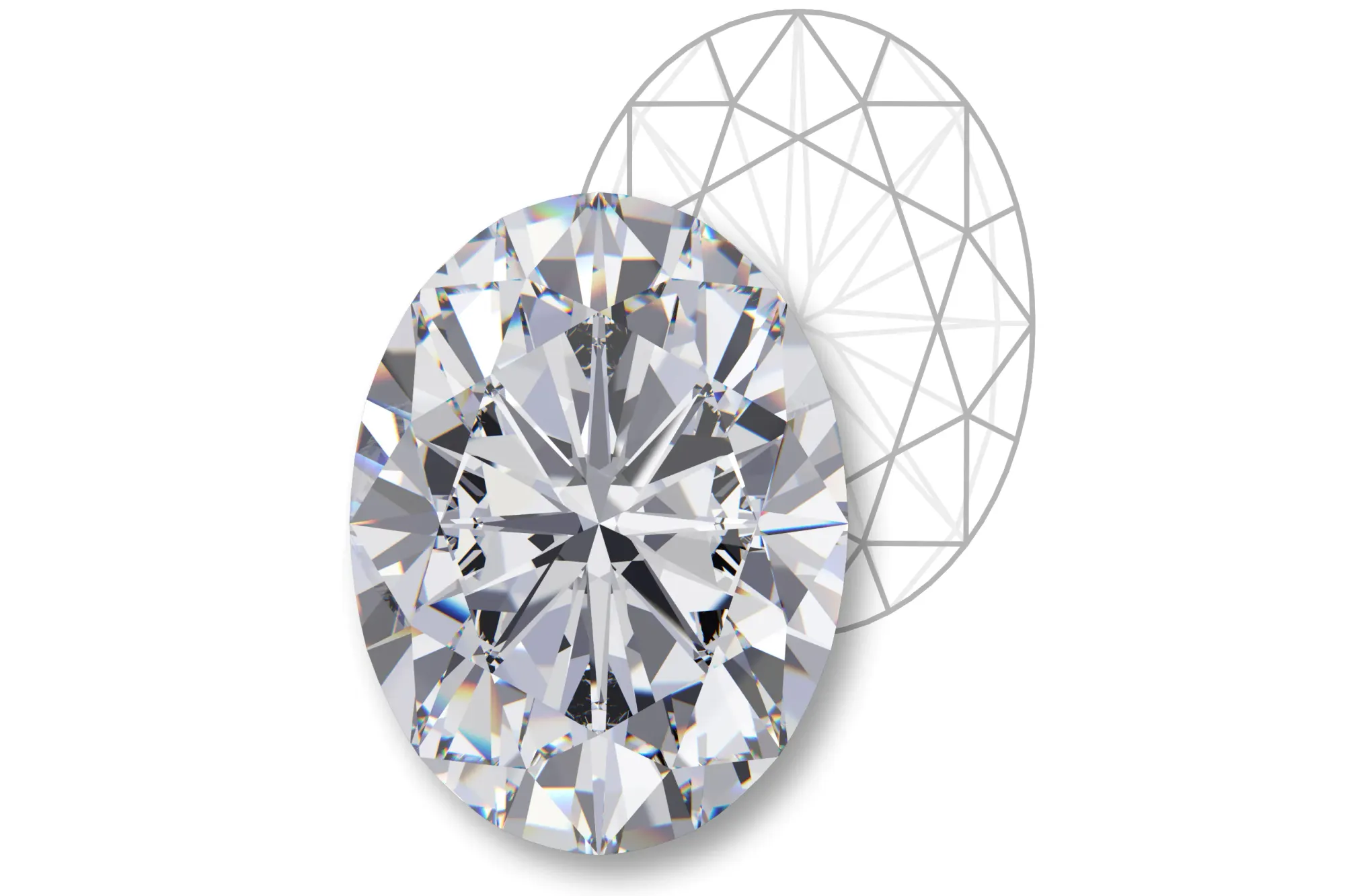
This elongated shape is sophisticated and elegant on any finger. It's also a great buy for those looking for a larger stone, as face up they appear larger than a round diamond of the same carat weight. Look for stones with exacting symmetry and proportion to avoid a dark 'bow tie' affect across the middle.
Click here to find out exactly what to look for in an oval cut diamond.
Marquise
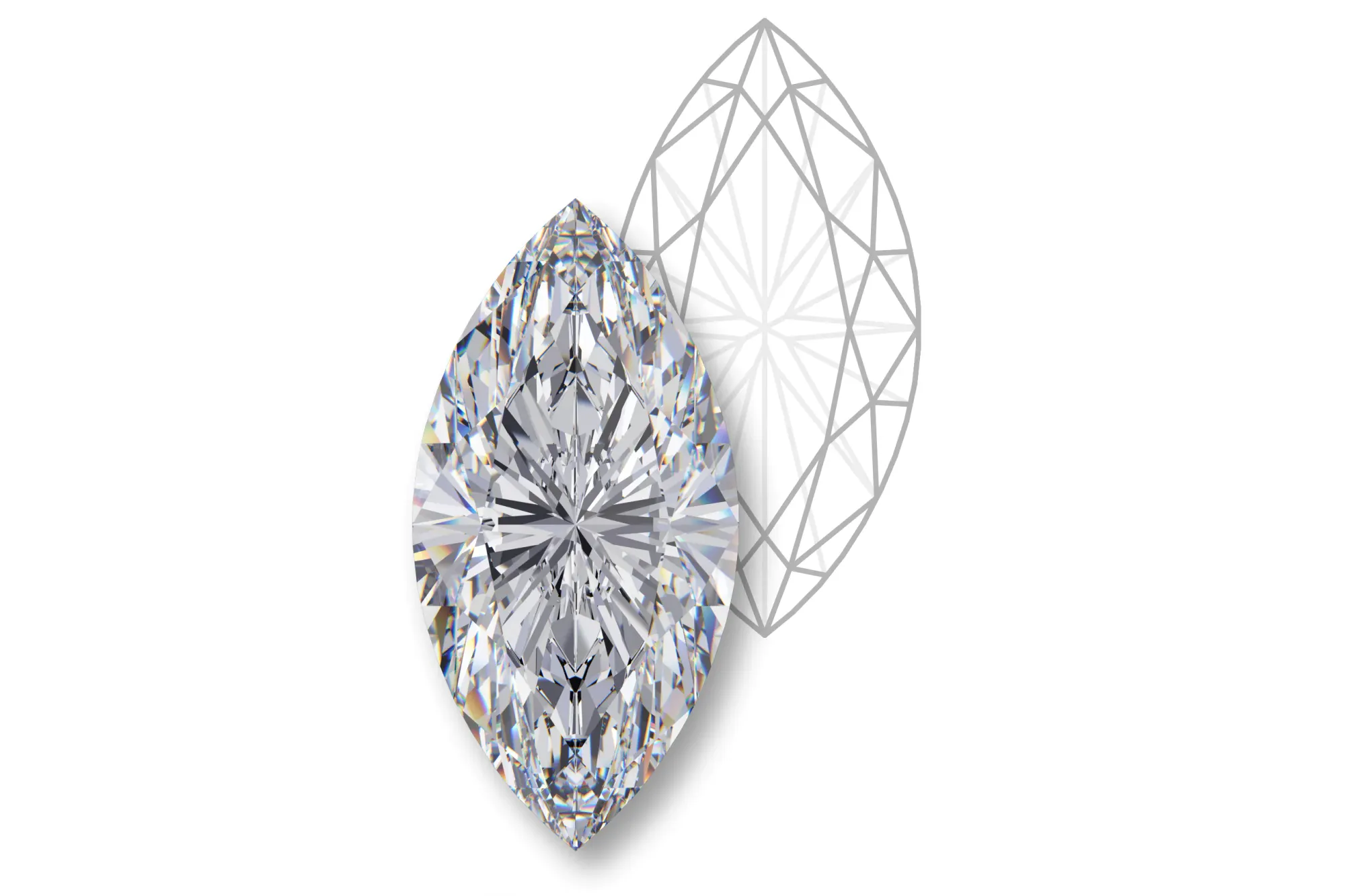
The geometric shape of a marquise diamond is strikingly beautiful. Most commonly worn lengthwise, the elongated shape makes fingers appear longer. Wearing it width-ways would create a bold, modern look. Like the oval, marquise diamonds appear bigger than round brilliant stones of the same carat. Be sure to select a diamond where the points are aligned, and choose a setting which protects the vulnerable ends.
Click here for an in-depth guide to buying your perfect marquise diamond.
Pear
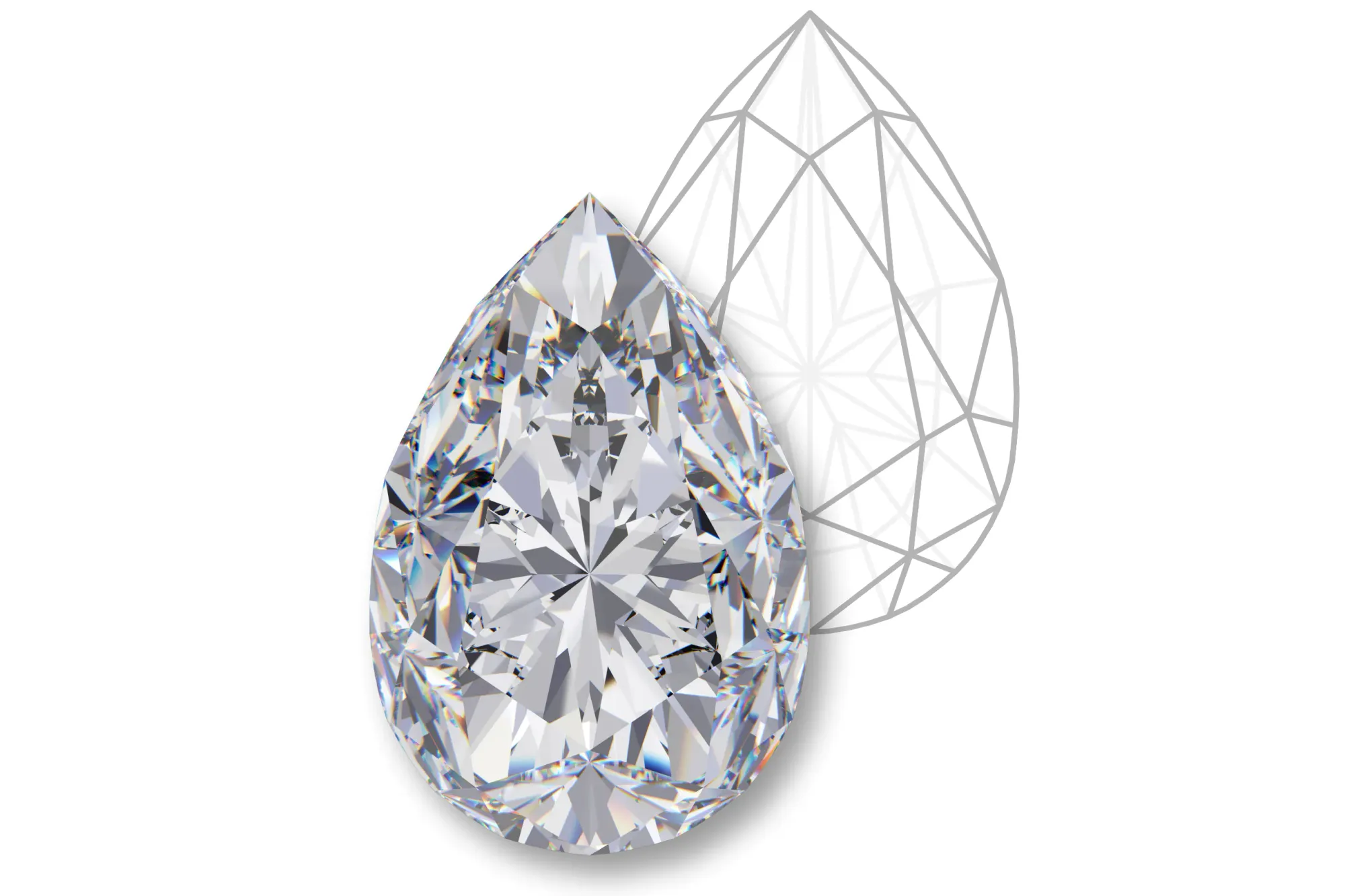
The pear or teardrop diamond is the shape of some of the most famous diamonds in the world. Elegant and eye-catching, this shape is cut for a brilliant show of light and sparkle. It has a larger face-up appearance than a round brilliant, and the teardrop shape flatters and elongates the finger when worn with the point facing the nail. Symmetry is essential for a pear shaped diamond, and diamond reports will only grade facet symmetry, not shape symmetry. Examine the stone carefully to ensure it looks right. Some pear shaped diamonds are cut with a longer width-length ratio, some wider, giving room for personal preference.
Cushion
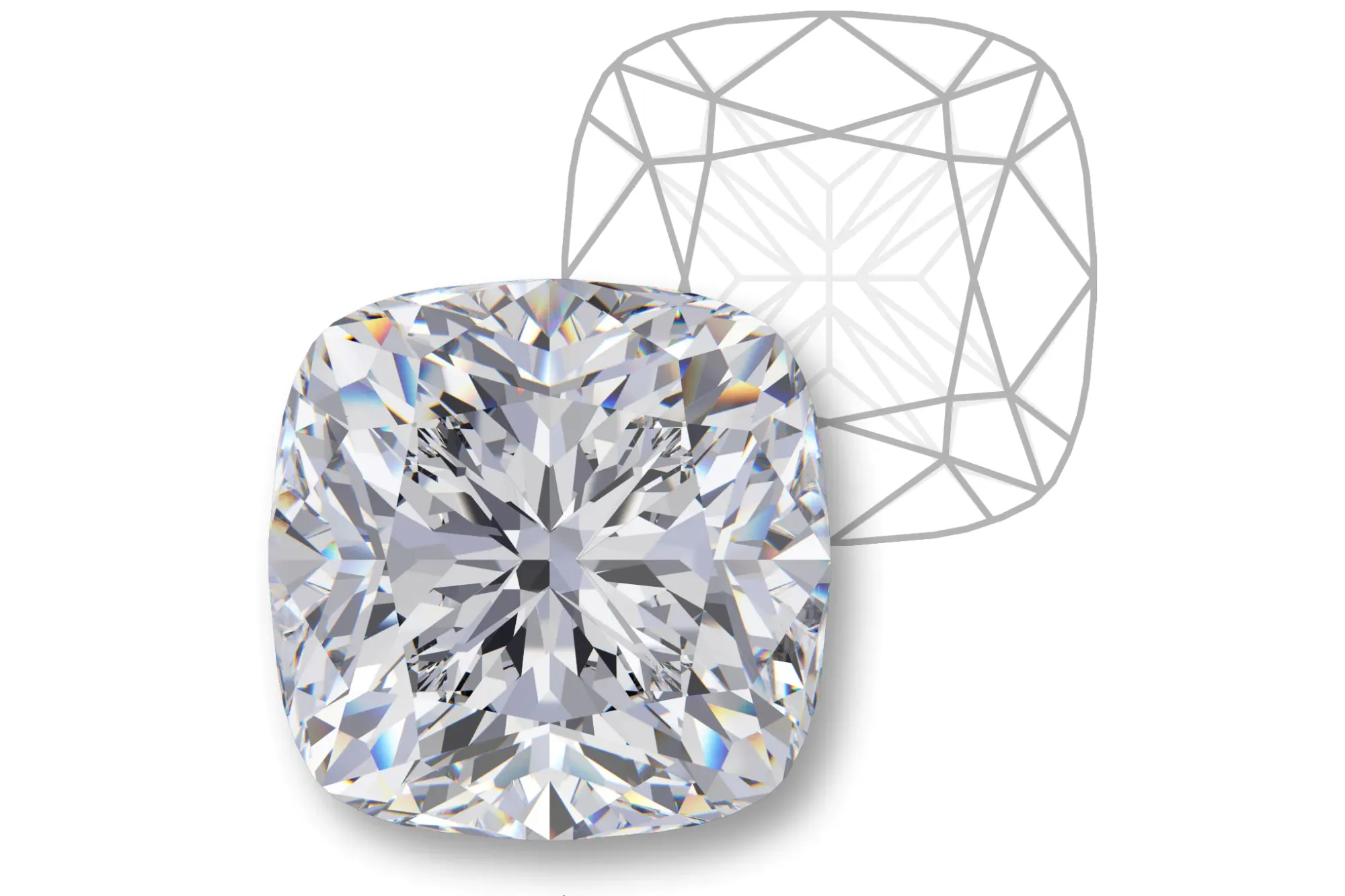
The cushion cut, also known as the pillow cut, can be either square or rectangular in shape, with soft rounded corners and (often) slightly sloping sides (hence the name!). The cushion cut is designed to show off a diamond's fire to stunning effect, and as with other brilliant cut diamonds it has plenty of sparkle.
Emerald
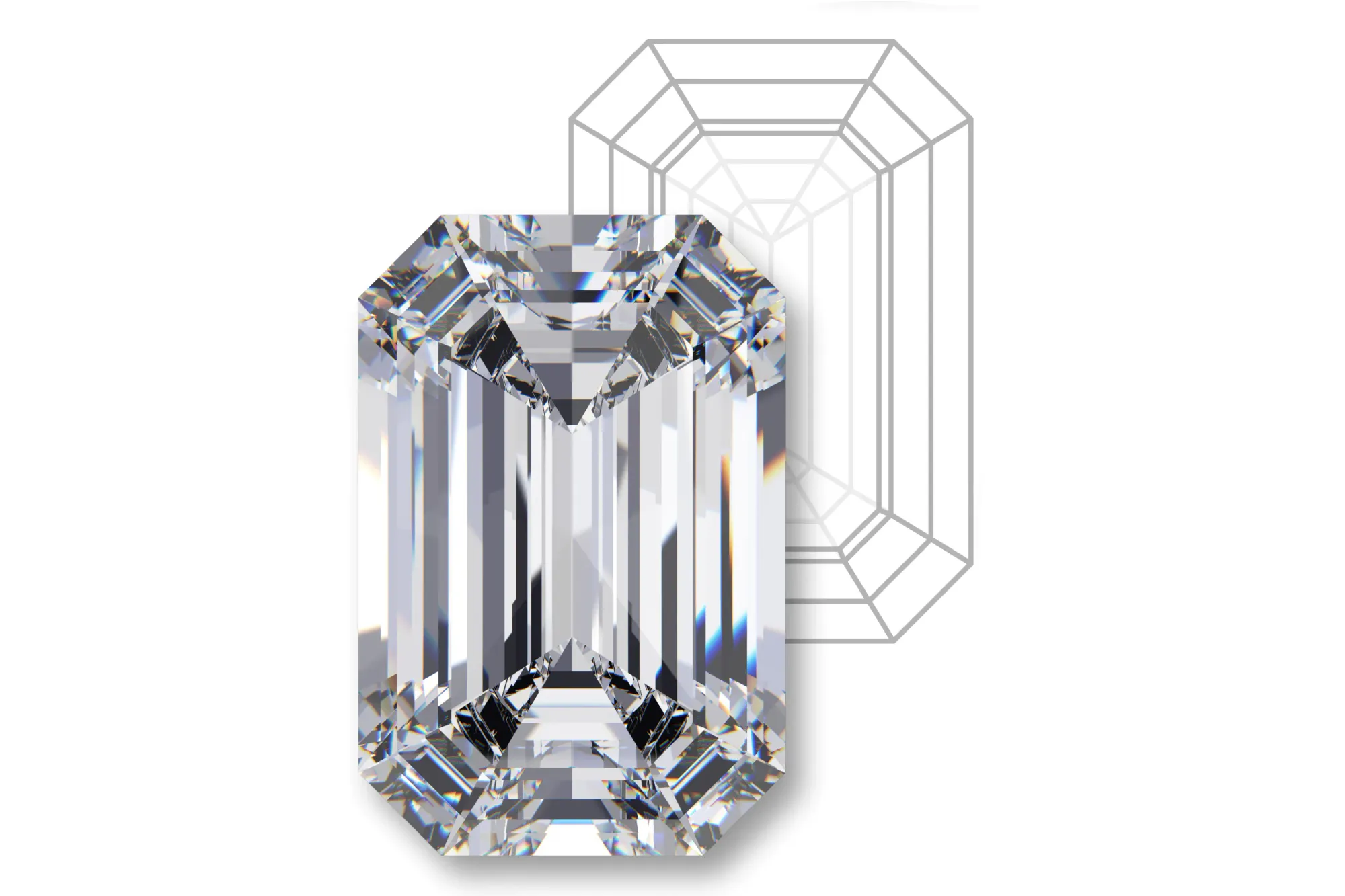
Emerald cut diamonds have a unique glamour and elegance. Here, cut and shape are intertwined, with the name referring to both the shape of the diamond and its parallel, rectangular facets cut into stepped terraces. These facets and the large, open table show off the diamond's icy beauty. Rather than sparkling like a brilliant cut, the Emerald cut flashes white light. It's therefore important to shop in the higher clarity grades, but despite this they show off carat weight and are a great choice if you're looking for a larger stone without the larger price tag.
Click here for our comprehensive guide to buy the best emerald cut diamond.
Asscher
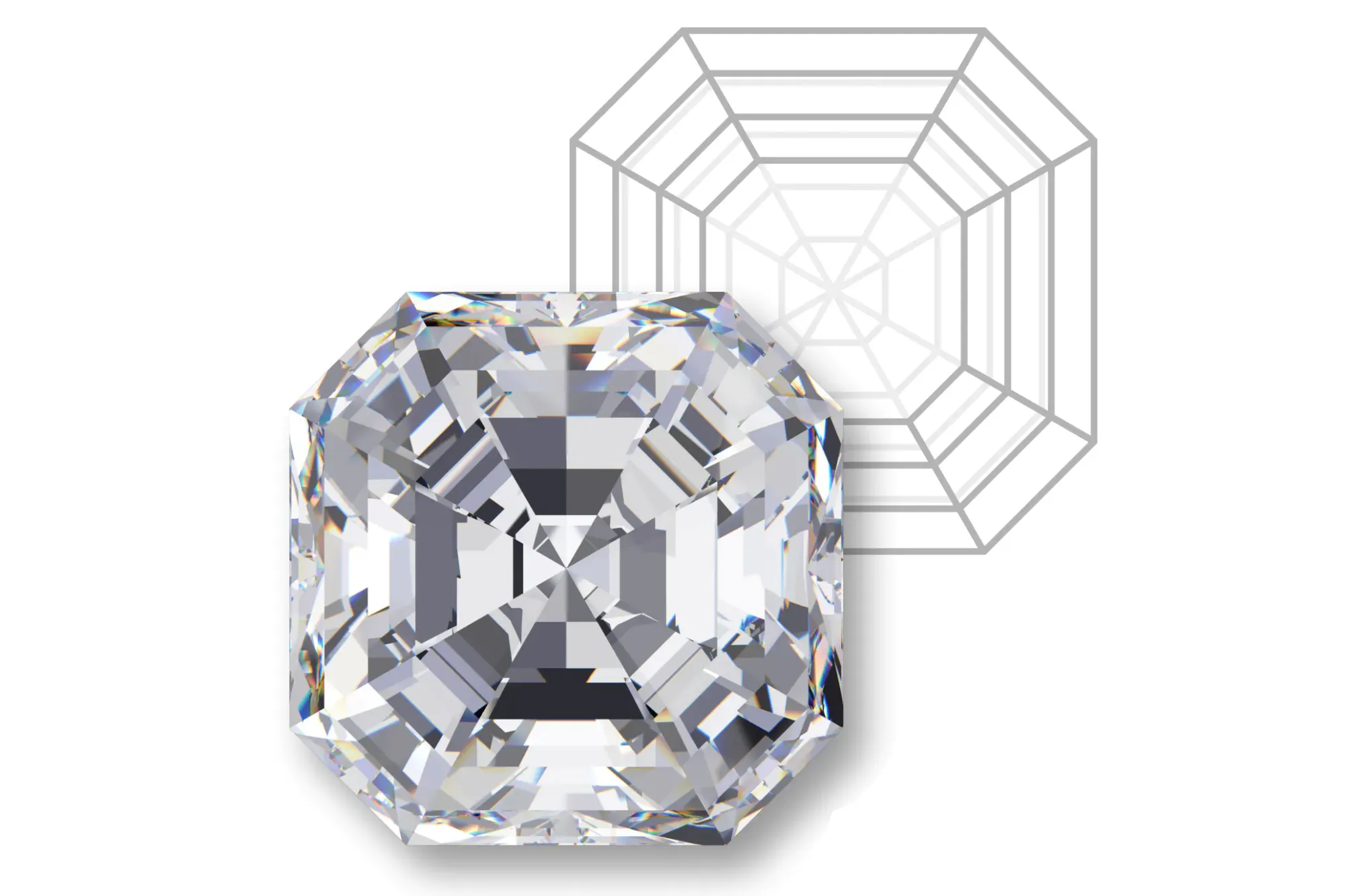
With an understated Art-Deco glamour, the Asscher cut is similar to the emerald cut, but is square with more cropped corners. Like the emerald cut, the clean, stepped facets of the Asscher cut produce flashes of light rather than the sparkle of a brilliant cut.
Radiant
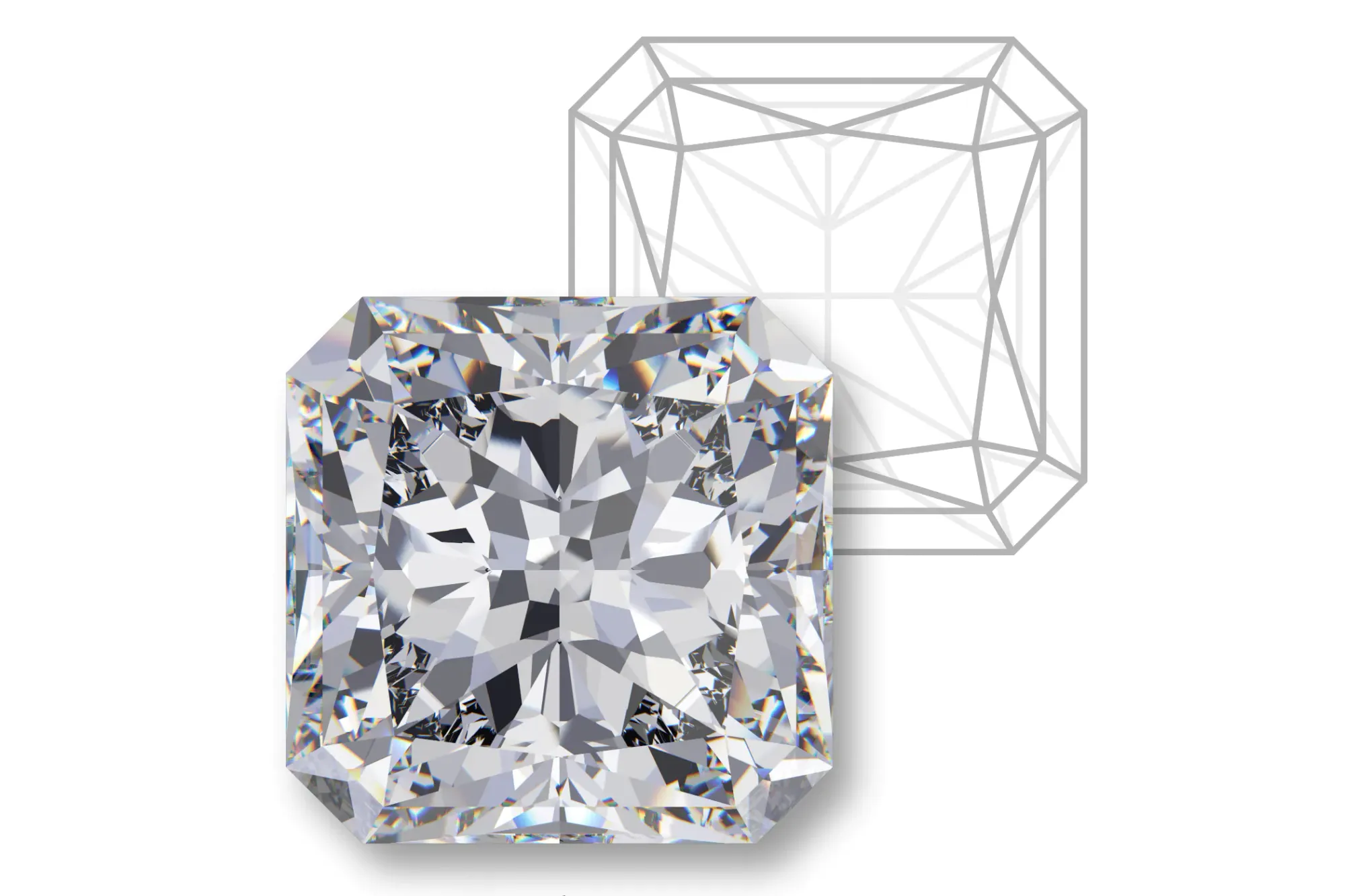
With the outline shape of an emerald cut, and facets cut for brilliance, the radiant cut delivers on its name. Invented in 1977, this modern cut was designed to give a larger face up appearance whilst maximizing sparkle. The result is the rough diamond is used efficiently, as well as offering brilliance close to that of the round brilliant. Radiant diamonds offer excellent value for money and excellent sparkle.
Click here for all you need to know when buying a radiant cut diamond.
Heart
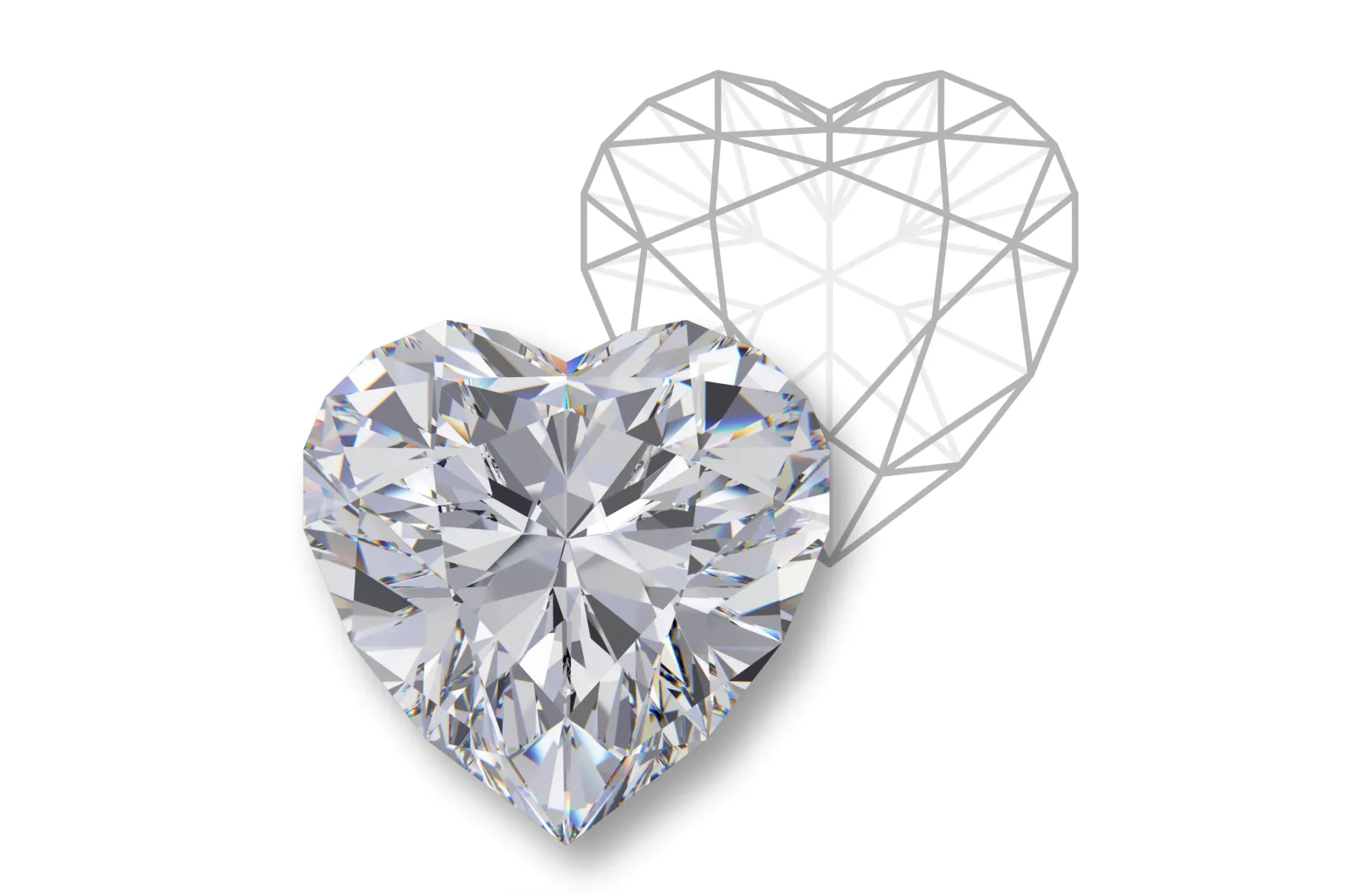
A symbol of love and romance, a heart shaped diamond can be the perfect choice for a classic romantic. Despite its modern look, it is a shape steeped in history. It's a shape that can deliver a stunning show of fire, but it's essential to buy a well cut stone. Look for a distinct cleft and point, and symmetrical lobes.



